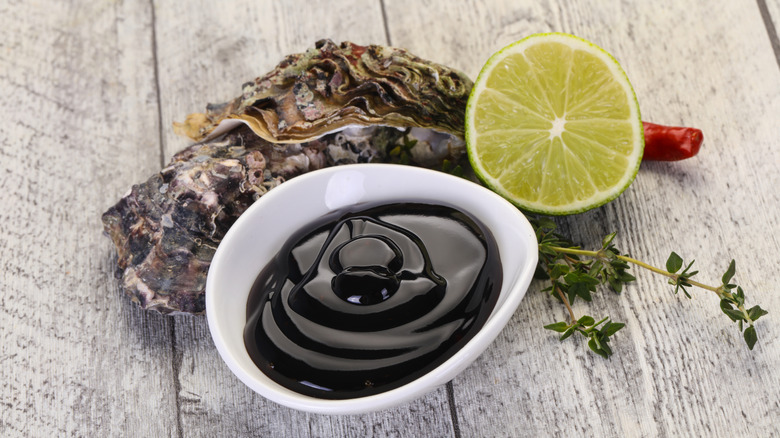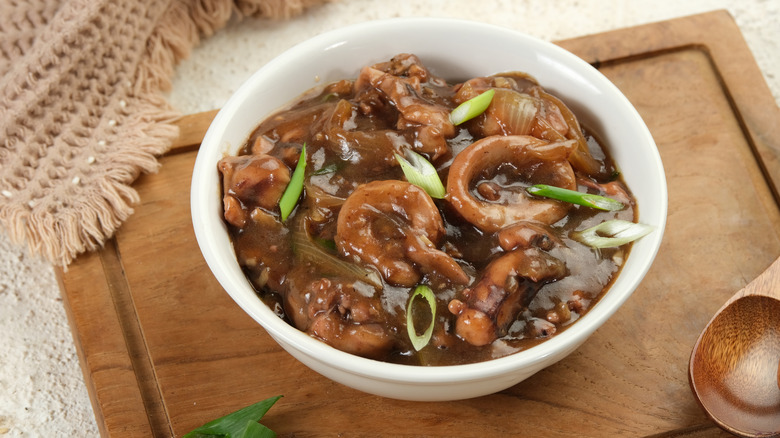Oyster Sauce Is The Flavor Upgrade Your Stir Fries Deserve
Stir-fry dinners are a gift that keeps on giving — delicious and highly customizable. It's easy to take your vegetables and proteins of choice, toss them together in a hot wok (or skillet), and have a meal on the table in minutes. Whether you're looking to spruce up a bag of frozen stir-fry from the store or make Hunan-style beef stir-fry from scratch, there's one ingredient you should keep handy for the ultimate flavor upgrade: oyster sauce.
Salty, sweet, and packed with rich umami flavor, oyster sauce is a standalone condiment that brings depth to any dish it graces. A popular staple in numerous Asian cuisines, the invention of oyster sauce is said to have been a happy accident. It all started in 1888, when Chinese restaurateur Lee Kum Sheung got distracted while boiling a pot of oyster soup, leaving it to reduce and thicken. Pleasantly surprised by the flavor of the dark brown concoction, he decided to bottle the special sauce under the brand Lee Kum Kee and sell it across the country. Thus, oyster sauce was born.
Today, many popular manufacturers — including Lee Kum Kee — still craft the condiment using a combination of fresh oyster extract and sugar to create a uniquely complex flavor with no fishy taste. Some brands, like Japan's Kikkoman, also add umami-boosting MSG (which isn't as bad for your health as outdated, racist myths would have you believe). To elevate your stir-fries with oyster sauce, a little bit goes a long way — simply add two to three tablespoons toward the end of cooking to properly incorporate its bold taste into your dish.
More ways to use oyster sauce
Striking the perfect balance between sweet and salty, oyster sauce is an incredibly versatile condiment with a multitude of uses beyond jazzing up your favorite stir-fried greens. It can be used directly from the bottle as a dipping sauce, or turned into a tangy dressing when mixed with spices and other condiments like soy sauce, sesame oil, and black vinegar. In China, tender blanched gai lan (commonly called Chinese broccoli) is often served with garlic-and-ginger-laced oyster sauce as a popular side dish. Thai drunken noodles (also known as pad kee mao) are made with a dash of oyster sauce, combined with soy and fish sauces to balance the dish's spicy chili kick.
Oyster sauce is also a key ingredient in many marinades for traditional Asian dishes such as Vietnamese bò lúc lắc and Cambodian lok lak, both commonly referred to in English as shaking beef. The sauce can add depth of flavor to stews and braises, and can even be used as a one-to-one substitute for soy sauce in a pinch, as long as you account for the touch of sweetness it brings. When storing oyster sauce, keep the bottle in a cool, dry place, refrigerate it after opening, and avoid freezing, as this will alter the sauce's viscosity.


